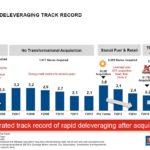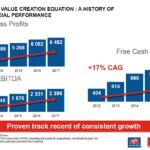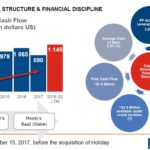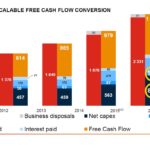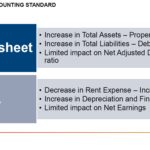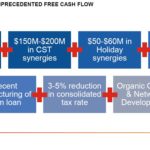Contents
Summary
- Alimentation Couche-Tard is the world’s 2nd largest convenience store operator. It operates in a highly fragmented industry. Its growth is being fueled through bolt-on and major acquisitions.
- The company has a significant presence in North America and certain regions in Europe. Growth opportunities in other densely populated regions of the world are underway.
- The company is proactively addressing the changes to the convenience store industry that will come about from the transition from fuel propelled vehicles to electric vehicles.
- This is a high volume low margin business in which very tight cost control is required. ATD, for example, has a global centralized procurement unit which negotiates pricing with key suppliers (eg. major oil and gas companies) for ATD throughout the globe.
- Soft Q3 2018 results were reported but this was partially the result of non-recurring events. The stock has pulled back ~$9/share from its late January 2018 high and I acquired another 500 shares on March 21, 2018.
Introduction
Alimentation Couche-Tard Inc. (TSX: ATD.a and ATD.b) reports its financial results in USD. Its stock, however, is traded on the TSX. Investors willing to purchase US shares over the counter should look at ANCUF. These shares, however, are very thinly traded.
ATD has Class A multiple-voting shares which are primarily held by insiders and which are very thinly traded. This article will deal with the more commonly traded Class B subordinated voting shares.
ATD uses USD as its reporting currency since it provides more relevant information given the predominance of its operations in the United States. This article, therefore, reflects all figures in USD unless otherwise noted.
Alain Bouchard, opened his first convenience store in 1980 in Laval, Quebec. The company has certainly come a long way since then.
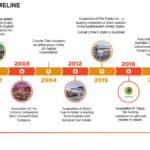 Source: ATD Investor Day presentation – January 22 2018
Source: ATD Investor Day presentation – January 22 2018
While ATD has been a publicly traded company for a few decades it held its first ever Investor Day in Toronto in January 2018. This article will touch upon the content presented at this recent Investor Day as well as the Q3 2018 results released March 20, 2018.
A few points to consider before you read this entire article.
If you are a dividend yield hungry investor then ATD will likely have little appeal to you. This company is in growth mode and while dividends have grown at double digit levels in recent years, management has deemed the retention of funds to finance growth as a higher priority.
ATD is within the top 20 largest cap TSX listed companies with a market cap of ~$33B as I compose this article.
Industry Overview
ATD operates in a highly fragmented industry. It ranks #2 in number of locations behind Japan’s Seven & I Holdings Co.. The company has vaulted to this position through a series of acquisitions.
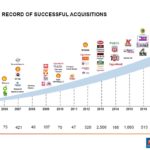 Source: ATD Investor Day presentation – January 22 2018
Source: ATD Investor Day presentation – January 22 2018
The following website reflects the top 202 competitors ranked by number of store locations.
Business Overview
As at the beginning of February 2018, ATD’s North American network comprised 10,020 convenience stores of which 8,698 stores had road transportation fuel dispensing.
The North American network consists of 19 business units, including 15 in the United States covering 48 states and 4 in Canada covering all 10 provinces.
Approximately 100,000 people are employed throughout its network and at service offices in North America. In addition, through CrossAmerica Partners LP, its supplies road transportation fuel under various brands to more than 1,300 US locations.
ATD also operates a broad retail network across Scandinavia, Ireland, Poland, the Baltics and Russia through ten business units. As at the beginning of February 2018, the European network comprised 2,730 stores, the majority of which offer road transportation fuel and convenience products while the others are unmanned automated fuel stations which only offer road transportation fuel. It also offers other products, including stationary energy, marine fuel, aviation fuel and chemicals. Approximately 25,000 people work in ATD’s retail network, terminals and service offices across Europe.
In addition, under licensing agreements, more than 1,900 stores are operated under the Circle K banner in 14 other countries and territories (China, Costa Rica, Egypt, Guam, Honduras, Hong Kong, Indonesia, Macau, Malaysia, Mexico, the Philippines, Saudi Arabia, the United Arab Emirates and Vietnam), which brings ATD’s worldwide total network to more than 15,900 stores.


 Source: ATD Investor Day presentation – January 22 2018
Source: ATD Investor Day presentation – January 22 2018
ATD’s Mission is ‘Let’s Make It Easy’. In other words it wants to be the world’s preferred destination for fuel and convenience.
Its strategic vision and priorities are as follows.
 Source: ATD Investor Day presentation – January 22 2018
Source: ATD Investor Day presentation – January 22 2018
The company’s culture consists of openness, honesty, humbleness, optimism and is one in which doing the right thing is key.
Management has found that success is brought about by keeping politics and bureaucracy out of the business.
The following images reflect ATD’s competitive advantages and four pillars of value creation.
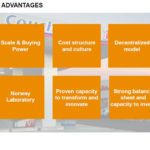
 Source: ATD Investor Day presentation – January 22 2018
Source: ATD Investor Day presentation – January 22 2018
It operates a very lean model and continuous progress is being made relative to procurement. It has found that its cost of doing business has been consistently better than the companies it has acquired. Part of this has to do with the bargaining power it has with vendors. ATD dispenses almost 186.7 million litres of fuel daily and it serves ~9 million customers daily.
ATD has a leading market share in 15 major metropolitan areas in North America.
While ATD is a global company, it has a decentralized model which allows it to stay close to customers. Procurement might be centralized but pricing is the responsibility of the local business unit.
ATD has indicated that the vast majority of the products purchased within its convenience stores are consumed within 30 minutes of purchase. As a result, management is of the opinion that ATD is Amazon and Uber proof.
The company’s core consumer is in the 18 – 35 year range. They value parking, restrooms, and space.
ATD has completed multiple acquisitions in its history. In all cases, it found that it has been able to increase volumes and to reduce costs. In Denmark, for example, it removed the Shell signs from the locations it acquired. Although Shell had been in Denmark for over 100 years, ATD was able to increase volumes by 10%. In fact, everywhere ATD has rebranded in Europe, volumes have increased.
Electric Vehicles
The number of electric vehicles is increasing exponentially as it is expected that around 2020 electric cars will be cheaper to produce than gasoline vehicles. In 2017, Morgan Stanley raised threefold its projected sales estimates of electric vehicles by 2025.
Clearly electric vehicles are here to stay and will impact the convenience store landscape. ATD is not sitting idly by. After piloting electric vehicle charging stations in Norway, ATD is expanding the effort across its European network. It has joined forces with Ionity (a joint venture of BMW Group, Daimler AG, Ford Motor Company and the Volkswagen Group with Audi and Porsche) to build a network of reliable and powerful charging stations along major routes across Europe.
Impact of the Tax Cuts and Jobs Act (TCJ) on ATD
ATD recorded a net tax benefit of $0.1963B of which $0.0141B related to non-controlling interests. The net tax benefit is mostly derived from the remeasurement of ATD’s deferred income tax balances using the new U.S. statutory federal income tax rate (35% reduced to 21%) and which is partly offset by the Deemed Repatriation Transition Tax.
Management has indicated that due to the complexity of the act, it is possible adjustments will be required when further guidance becomes available.
Financial Review
During ATD’s first ever Investor Day in January 2018 in Toronto, Ontario, management indicated plans are to continue to expand ATD’s geographic presence.
Although ATD employs the use of leverage to fund its acquisitions it has a track record of deleveraging in relatively short order so it can free up credit capacity to continue with its acquisition strategy.
Source: ATD Investor Day presentation – January 22 2018
Q3 2018 Results
ATD reported Q3 2018 results on March 20, 2018 for the 16 and 40 week periods ending February 4, 2018.
Investors should be aware that this is a thin margin business, and therefore, high sales volume is imperative. ATD is now at the stage where its annual sales allow it to generate preferred pricing with vendors thus placing it at a competitive advantage relative to its competitors.
EPS and EBITDA fell short of analysts’ consensus estimates with fuel margins being softer than expected. There was also soft organic growth in North America stemming from a weak retail environment and from dollar store competition. Results were also significantly impacted from poor weather conditions; the U.S. southeast alone had several unusual snow events spanning from Texas to the Carolinas that led to 3 lost selling days in a market that accounts for ~30% of U.S. sales.
Same-store road transportation fuel volumes in the U.S. also decreased by 0.4%. In the CST (one of ATD’s major recent acquisitions) U.S. network where it has a strong presence in Texas, same-store road transportation fuel volumes decreased by 0.8%, with stores recovering from Hurricane Harvey during the first few months of Q3.
Free Cash Flow (FCF) and Credit Ratings
The following image reflects ATD’s strong capital financial structure, its ability to generate significant free cash flow, and its credit ratings with Moody’s and S&P Global. Both credit ratings are at the mid-point of the lower medium grade credit rating range.
Source: ATD Investor Day presentation – January 22 2018
Valuation
ATD reported diluted net EPS (2017: $2.23 and 2016: $1.63 – a 36.8% increase) and adjusted diluted net EPS (2017: $2.02 and 2016: $1.68 – a 20.2% increase) for the first 40 weeks of FY2018. Consensus estimates call for FY2018 adjusted diluted net EPS of ~$2.87.
ATD (the ANCUF shares) closed at $45.38 which results in a forward adjusted diluted net EPS of ~15.8. I view this as a reasonable level for ATD given its growth runway.
Dividend, Dividend Yield, Stock Splits, and Dividend Payout Ratio
As noted earlier in this article, ATD is probably not an appropriate investment for investors seeking dividend income. While dividend growth has been reasonable in recent years, the most recent CDN $0.09/quarter dividend ($0.36/year) represents a ~0.6% dividend yield on the basis of the March 21, 2018 closing stock price of CDN $58.35.
The dividend payout ratio is below 15% (CDN $0.36/year versus projected FY2018 adjusted diluted net EPS of ~USD $2.87).
The following is a list of ATD’s annual dividend during FY2012 – FY2017. Please note that the FY2012 and FY2013 dividend reflected below takes into account a 3:1 split on April 23, 2014. All dividends are paid in CDN$.
- FY2012 $0.0917
- FY2013 $0.1
- FY2014 $0.136
- FY2015 $0.19
- FY2016 $0.2675
- FY2017 $0.3475
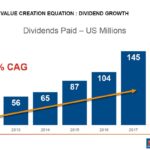 Source: ATD Investor Day presentation – January 22 2018
Source: ATD Investor Day presentation – January 22 2018
I reference Note 25 – Capital Stock in the 2017 Annual Report wherein it is disclosed that ATD has a dual class structure. The Class A multiple voting and participating shares are entitled to 10 votes per share except for certain situations which provide for only 1 vote per share and are convertible into Class B subordinate voting shares on a share-for-share basis at the holder’s option. Under the articles of amendment, no new Class A multiple voting shares may be issued.
I have no objection to ATD’s Dual Class structure. The controlling shareholders have a vested interest in the long-term success of ATD and can do what is best for the company without having to worry about an activist investor stepping into the picture and suggesting changes be made that may not necessarily be in the best long-term interest of the company.
Possible Future Listing on a Major US Exchange
ATD is currently not listed on an US stock exchange even though a significant percentage of its revenue is derived from the US market. I have no idea if it is management’s intention to eventually list in the US. If, however, ATD eventually lists in the US I am of the opinion that we will see far greater analyst coverage and investor interest. This will most likely have a positive impact on ATD’s share price once investors see how the company is growing and how efficient the company operates.
Final Thoughts
I view the soft results in Q3 2018 as short-term in nature and am grateful that the market has seen fit to punish ATD’s stock price subsequent to the release of its Q3 2018 results.
At the end of January 2018, ATD was trading at ~$67. I felt this was an elevated level and opted to patiently bide my time before initiating a purchase.
I am impressed with:
- management’s philosophy and level of discipline;
- the company’s ability to acquire companies and to consistently generate synergies that result in cost reductions which exceed projections;
- the ability to deleverage relatively quickly;
- the strong record of FCF generation.
Couple this with the fact ATD is now a significant player in a highly fragmented industry and I think we will see considerable stock price appreciation over the next 10 – 20 years. As a result, on March 21, 2018, I purchased 500 Class B shares thus raising the number of shares owned to 553.
As an aside, if you are interested in learning about Alain Bouchard’s journey from extremely humble beginnings to now being one of the wealthiest Canadian businessmen, you may wish to read Daring to Succeed – How Alain Bouchard Built the Couche-Tard & Circle K Convenience Store Empire.
Thanks for reading!
Note: I sincerely appreciate the time you took to read this article. Please send any feedback, corrections, or questions to [email protected]
Disclaimer: I have no knowledge of your individual circumstances and am not providing individualized advice or recommendations. I encourage you not to make any investment decision without conducting your own research and due diligence. You should also consult your financial advisor about your specific situation.
Disclosure: Long ATD.b.
I wrote this article myself and it expresses my own opinions. I am not receiving compensation for it and have no business relationship with any company whose stock is mentioned in this article.



